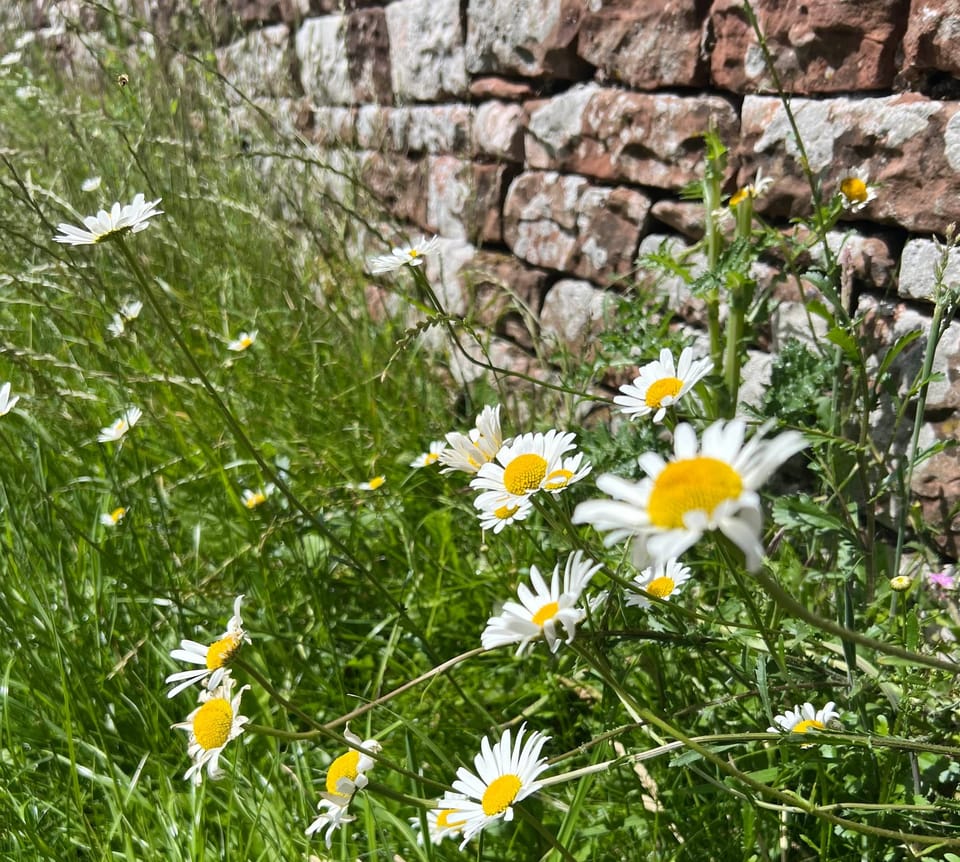doer-talkers, urban health 3.5, communities of practice

The Work Beneath is an ongoing letter on change for a just and thriving world — in systems, in teams, and in ourselves.
Dear lovely colleagues + friends,
[This was written 2 weeks ago, but due in part to technical issues I'm only just pressing send now!]
Earlier this week, I took part in my first away day as a trustee with Futureproof Cumbria, our county's climate and community action charity. An energizing day at Into the Woods Cumbria (treehouse, pizza oven, composting toilets!).
🤔 The power of doer-builder-talker organizations
Futureproof Cumbria is an example of what I've been thinking of as "doer-builder-talkers" – mission-driven organizations that deliver frontline action, equip other people and organizations to make change, and influence through policy advocacy.
These organizations not only operate through different ways of making change; the different modes strengthen each other.
For example, here's how Futureproof Cumbria DELIVERS, EQUIPS, and INFLUENCES:
🔨 DELIVERS: supports household-level action (retrofits)
👥 EQUIPS: builds community power (Cumbria's first climate citizens' assembly); catalyzes county-wide partnership (the National Lottery-funded Zero Carbon Cumbria Partnership)
📣 INFLUENCES: shares what it's doing to influence policy and practice.
And here's how India's Arpan DELIVERS, EQUIPS, and INFLUENCES on an entirely different issue: preventing childhood sexual violence (CSV). (I'm working with Draper Richards Kaplan Foundation on their new CSV prevention portfolio.)
🔨 DELIVERS: delivers prevention and intervention services to schools
👥 EQUIPS: trains others to deliver these services
📣 INFLUENCES: engages in advocacy and research to drive local, state, and national policy change.
Anything I'm missing here? Can you think of a better name? What "doer-builder-talker" organizations do you admire? Let me know.
I also caught up with Antonia and Sham at IoUH on progress towards their partnership with the Healthy City Design 2025 conference in Manchester this October. It's been a joy supporting a dozen of their partners with submissions, on topics from participatory grantmaking to community land trusts. Looking forward to see the program decisions in July.
Their work has inspired me to start outlining something I'm temporarily calling Urban Health 3.5: understanding health in cities as shaped by relationships, care, trust, time, and voice... in addition to infrastructure, services, policy and the environment. Would love to hear others' thoughts.
Finally, I'm finalizing the race equity work with Farid at IoUH for their health effects of air pollution programme. Impressed by their thoughtful comms process, as outlined by Patrick on our call this week. Hoping to share something publicly soon.
💭 🛠️ Ideas + resources
— David Graeber on why “inequality” sounds inevitable – and what we should call the problem instead. He offers “class power” or “concentration of capital”. [LitHub, via Erin Remblance responding to Jason Hickel’s Global Inequality project]
— Caroline Cassidy of Capita on the fundamentals we humans return to: care, solidarity, meaning. [Capita]
— What Juneteenth is for, and why reckoning with the past matters. [Vanity Fair]
— Ever wondered why the only male contraceptive options are condoms and vasectomies? One reason: the "individualist" way drugs are approved in the USA. The FDA weighs risks and benefits to the individual taking the drug. But for men, contraceptives would mean taking on net risks, unlike women, for whom pills or IUDs side are typically safer than the risks of pregnancy and childbirth. So either male contraceptives must be risk-free, or we need a new risk assessment framework that recognizes where one partner might willingly take risks to reduce the other’s. [Slate]
— A comprehensive resource for anyone nurturing collective learning and action: Organizational expert Emily Webber defines "communities of practice" as "people connected through a shared passion for something they actively practice and who collectively grow as they interact regularly." Check out her rich Communities of Practice resource collection. I need this! [Communities of Practice]
— Grill the limes before squeezing them in for a smokey note, and other ways to make the perfect guacamole. [Martha Stewart]
✨ Connections + rhythms
I'm grateful to have carved out some spacious days this summer, and am reconnecting with old and new friends and collaborators. This week's work catch-ups included:
— Oli Courtney, who's launching an Asia-Pacific climate collective
— Sophia Schuff, who shared Gehl's work on social infrastructure
— taking an hour to write side-by-side on Zoom with my Fletcher roommate Huria Ogbamichael – we both made good progress!
— a beautiful conversation with Dee Jajeja on the authenticity, presence, and interdependence he's finding with his family in Costa Rica.
Physical rhythms I'm easing back into a gentle running rhythm after an unplanned month off — thanks this week to my run-buddy Jessie. Tuesday easy runs, Thursday intervals/tempo, weekend long runs. A good running rhythm helps to ground my days. What rhythms support you?
😎 Tomorrow is “B-dag” — our primary school aged son’s nickname initial + Dutch “dag” (day). For 24 hours he'll be in charge of how and when he plays / eats / sleeps as long as it's not unkind or unsafe. Inspired by this Guardian piece.
If you have favorite “doer-builder-talker” organisations, thoughts on Urban Health 3.5, or just want to connect, I’d love to hear from you.
As always, thanks for being here and until next time,
Patrin
PS If you know others who might enjoy this letter, feel free to pass it along — and thank you!